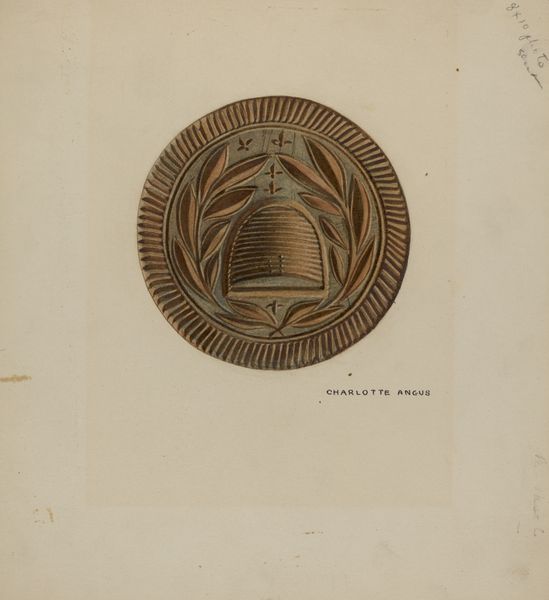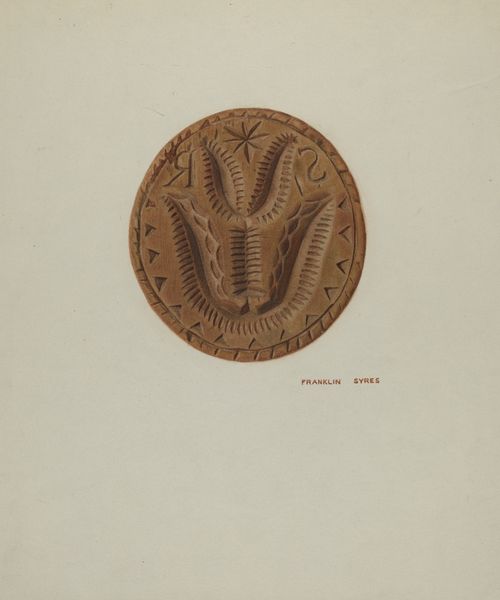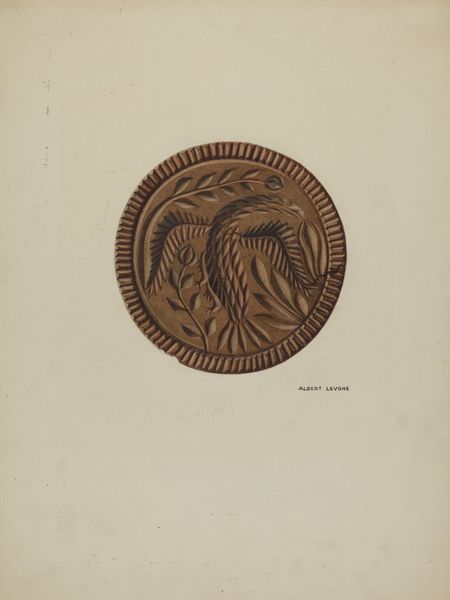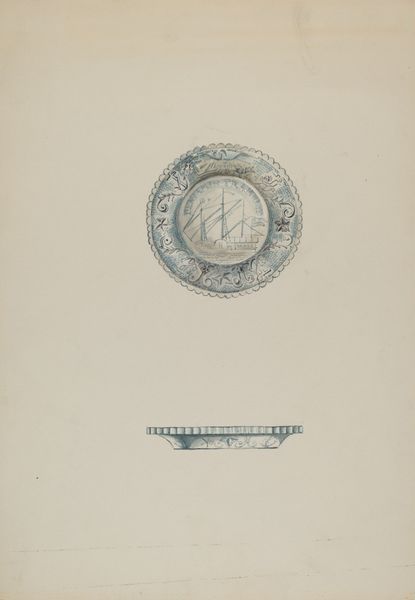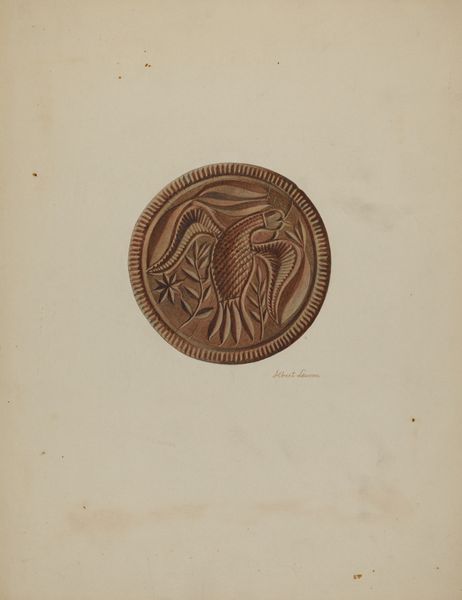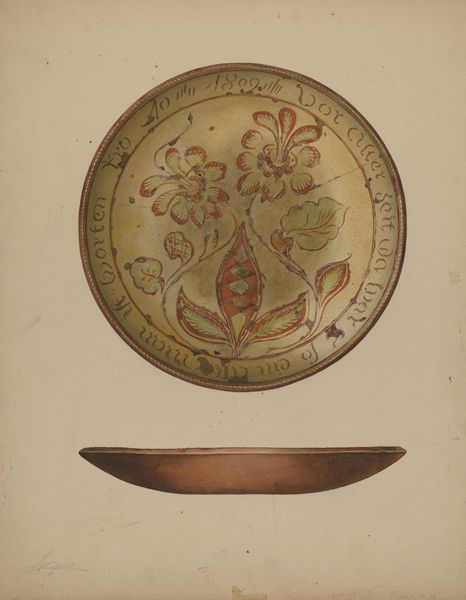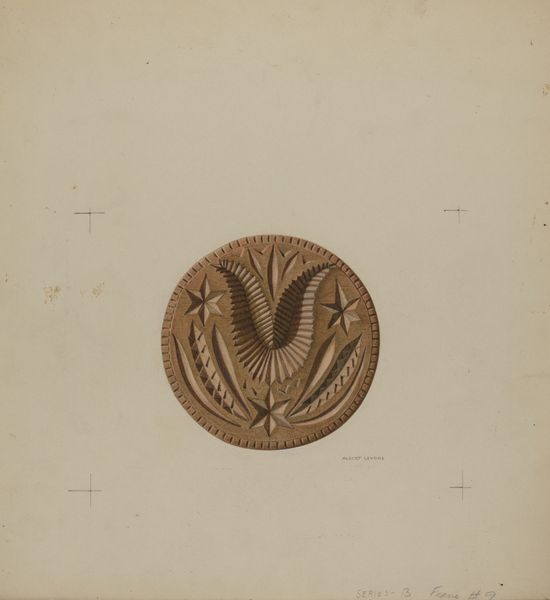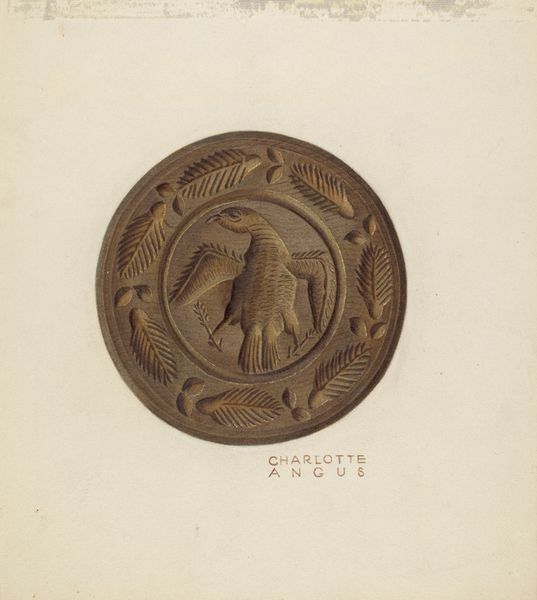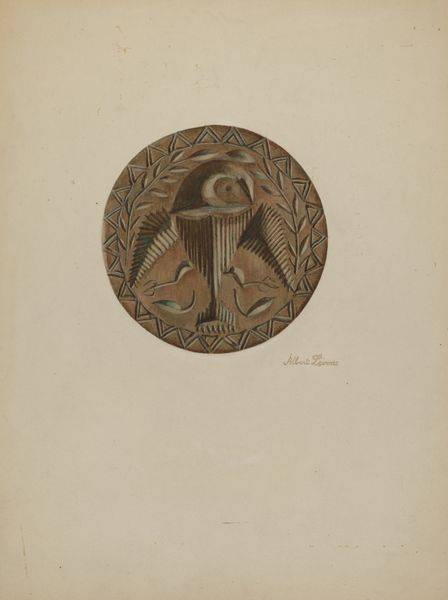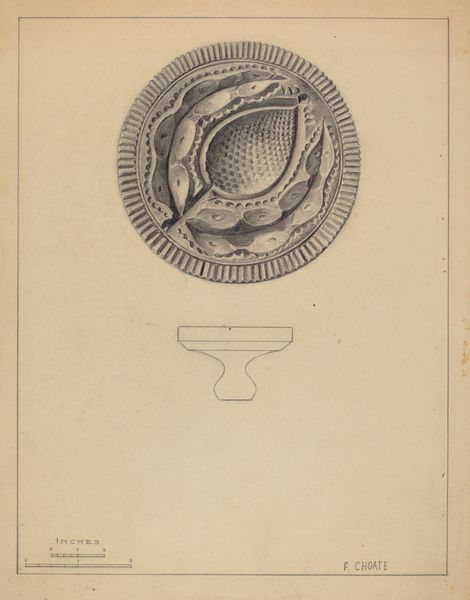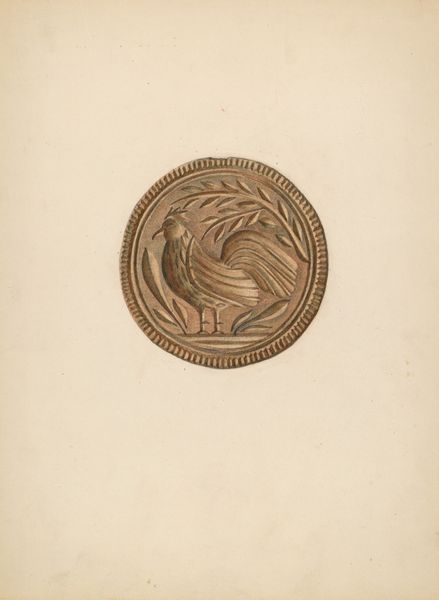
drawing, paper, pencil
#
drawing
#
paper
#
pencil drawing
#
folk-art
#
pencil
Dimensions: overall: 31.8 x 22.7 cm (12 1/2 x 8 15/16 in.) Original IAD Object: 4" whde; 4 1/2" high
Copyright: National Gallery of Art: CC0 1.0
Curator: Well, this is rather lovely, isn't it? There's something so unassuming and charming about Charlotte Angus's rendering of a Pa. German Butter Mold, made around 1938 using pencil and paper. I must admit, when I look at this, I think of quiet mornings, fresh bread, and the simple, ritualistic comforts of home. What's your first impression? Editor: I notice the prominence of folk art in renderings like this and their placement within the domestic sphere and patriarchal social systems. It’s curious, isn't it, how something so quotidian is framed as significant, worthy of preservation even? It makes me wonder about the cultural values assigned to food production and who historically controls these processes. Curator: It's interesting that you see it that way. To me, this isn't about control but about care. I am thinking the detail of the chicken—look how she captured its stance. It suggests a kind of reverence for everyday beauty. It’s simple, true, but it reminds us where nourishment comes from. Editor: The chicken is definitely a central motif. Thinking critically, this also speaks to systems of labor and the economic underpinnings of domesticity. Who owned the chickens? Who processed the butter? Often this labor disproportionately falls on women. While some revere a certain kind of simple lifestyle, let us also consider all that has gone unsaid and unseen throughout the histories in domestic settings. Curator: But there is beauty and craft in making butter, surely? Editor: Of course. I appreciate the artisanal qualities, while noting that those crafting hands aren't often recognized as intellectual forces or social actors. These artistic forms offer crucial perspectives to examine the social relationships around the material culture, gender roles and cultural expectations, and the role that the production and consumption have on how a culture sees itself and others. Curator: That’s a thought-provoking reading of Angus's drawing. I might think a bit more on it over breakfast tomorrow, with some buttered toast! Editor: Well, I guess it's always a worthwhile venture to challenge ingrained romanticism while seeking recognition and equity across culture and time, regardless of toast spread, right?
Comments
No comments
Be the first to comment and join the conversation on the ultimate creative platform.

